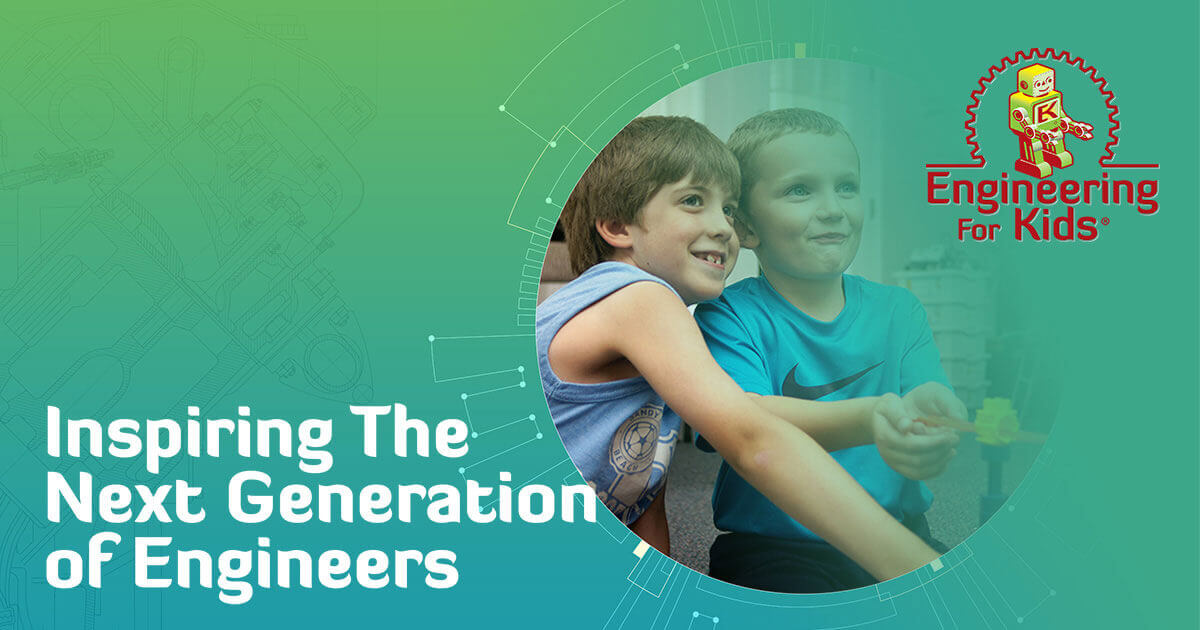
Now more than ever, you may be looking to keep your child busy at home. While we can’t wait to get back to in-person camps and classes, we’re still here to help inspire the next generation of engineers virtually.
In addition to offering virtual programs, we’ll be updating this blog with different science experiments you can do with your kids at home. And don’t worry, we bet you’ll have most of the items needed on hand already. So get ready to enjoy some parent-child bonding time while also exploring different science concepts using household items with your young learner!
Inertial Eggs
Use eggs to learn about momentum and changing direction!
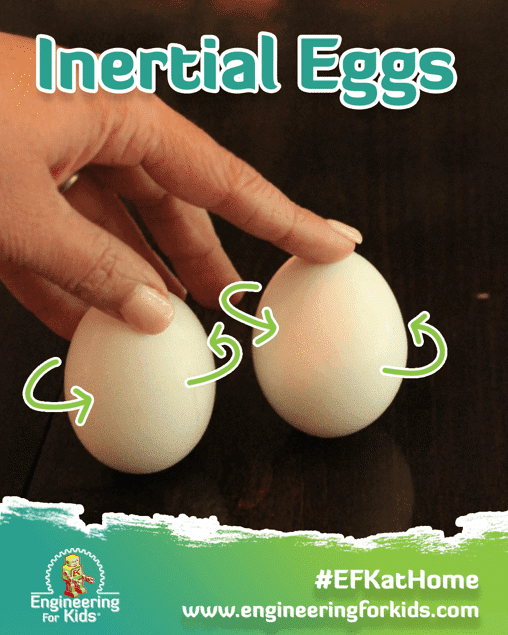
What You’ll Need:
- 1 hard-boiled egg
- 1 fresh egg (the fresher, the better!)
Instructions:
Spin each type of egg (hard-boiled and fresh) on a table. Leave it to spin for just a few seconds, then momentarily stop it by placing your finger on top. Release your finger from the egg and observe what happens next!
What’s the science here?
The fresh egg will start to spin again when your finger is released, while the other egg will remain at a dead stop. The fresh egg has fluid and yolk inside it which gains momentum. When the egg is momentarily stopped, the yolk continues to turn inside the shell. When it is released, the viscosity of the fluid between the still spinning yolk and the shell causes the shell to spin again.
Dancing Raisins
Do you think a raisin will sink or float? Do you think the type of drink depends on what it does? In this science experiment, let’s make some raisins dance!
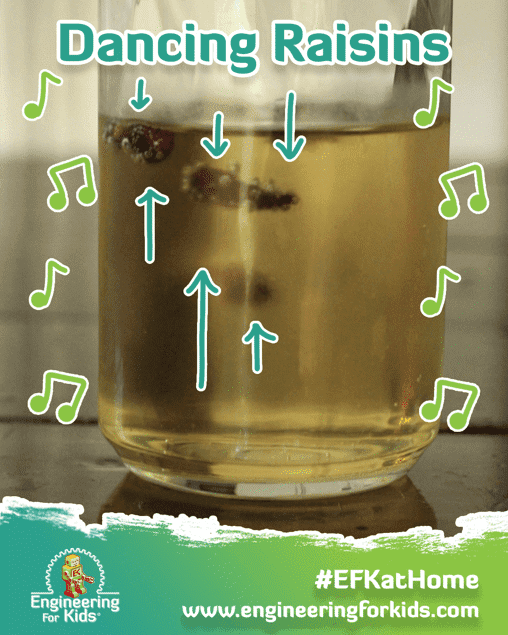
What You’ll Need:
- A clear, fizzy, drink (like ginger ale or sprite)
- Tall clear glass
- Handful of raisins
Instructions:
Pour your fizzy drink into the tall glass. Notice the bubbles coming up from the bottom of the glass. The bubbles are carbon dioxide gas released from the liquid. Drop a few raisins into the glass. Watch them for a few seconds and try to describe what is happening. Do they sink or float? Now, keep watching!
What’s the science here?
Raisins have a higher density than the liquid in the glass, so they sink to the bottom. Carbon dioxide bubbles attach themselves to the raisins increasing their volume while adding very little to their mass. With greater volume, the raisin displaces more fluid. This causes the water to exert greater buoyant force, pushing the raisins upwards to the top of the liquid. Once they reach the top, the carbon dioxide escapes and the raisins sink again!
Floating Ping-Pong Balls
Create this fun, floating ping-pong ball illusion by placing the ping-pong balls in the airflow of a hairdryer. Try getting two of the balls to float at the same time — without hitting each other!
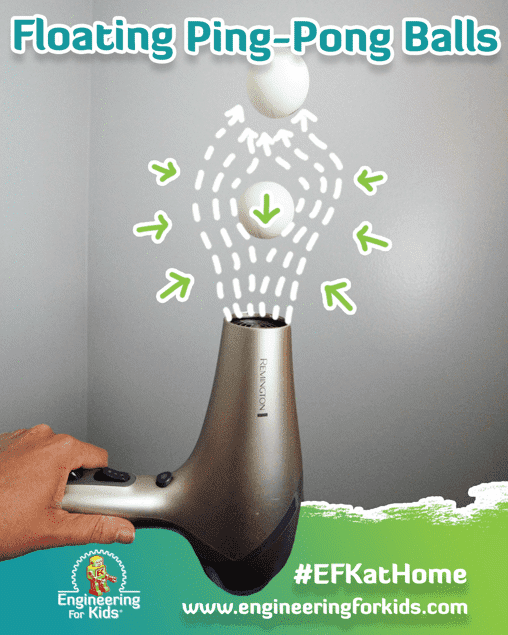
What You’ll Need:
- 2 ping-pong balls
- Hairdryer (that can be used on cool setting)
Instructions:
Plug in and turn on your hairdryer, make sure it’s on the cool setting. Hold the nozzle pointing upwards. First, place one of the ping-pong balls into the stream of air. Then try placing another ball into the same stream of air but on top of the first ball.
What’s the science here?
The hairdryer produces a high-velocity stream of air with low pressure. The surrounding air is at a higher pressure which keeps the ball inside the stream. When the upward force of the air equals the weight of the ping-pong ball the ball is said to be in ‘equilibrium.’ The theory at work here is Bernoulli’s principle. This is an equation linking air pressure, velocity, and density with particle weight.
Oil and Water
Have you heard the term “oil and water don’t mix”? Well, it’s true! Here’s a fun way to teach kids about different densities in liquids!
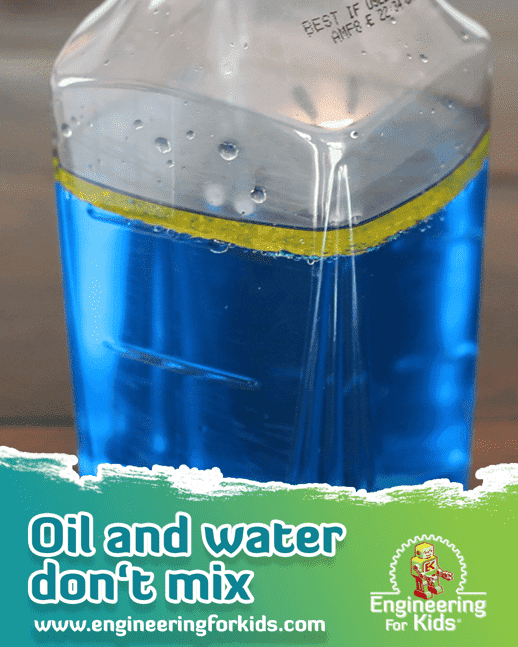
What You’ll Need:
- Oil
- Water
- Blue food coloring (to contrast the oil)
- A large bottle with a lid
Instructions:
Clean and empty out your large bottle. Then fill it about 1/3 of the way up with water. Add a few drops of blue food coloring. Replace the lid and shake to disperse the food coloring throughout the water. The food coloring makes the water look bright blue and you’ll be able to see more of a distinction between the oil and water. Pour oil slowly into the water, and you’ll notice that it returns to the surface of the water. Try slowly shaking up the mixture and watch it separate again!
What’s the science here?
Oil molecules are only attracted to other oil molecules. Water molecules are attracted to water molecules. They don’t mix together. The oil floats on top of the surface because the oil is less dense than water.
Think about other liquids at home, what else might have a different density than oil and water? Try experimenting with different liquids to see if you can find something denser than water – that will sink to the bottom.
Take an Online Class with Engineering For Kids
If your child loves doing these home experiments, we’re sure they’ll love a virtual class with EFK! We offer unique virtual classes that cover many STEM fields while also teaching our students about problem solving and creative thinking through the Engineering Design Process! Set your young-learner up for success in STEM, contact your local EFK to learn more about what programs are available.




